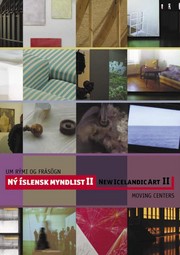Darri Lorenzen and Elin Hansdottir collaborated on Site Scene , a site-specific work that extends their interest in the construction and dismantling of viewpoints. Lorenzen's recent Spegl {Reflection} (2004) exemplifies his interest in the position of the viewer. The work consists of five photographs of mirrors placed in the same spots that the mirrors themselves once hung. If the viewer can find the spot from which a photograph was taken, his reflection in the glass of the framed photograph would match the pictured reflection in the photograph. Hansdottir's 2005 installation, made specifically for Isafjordur's Edinborg House, quite agressively interrogated the viewer's expectations. The installation consisted of a 150-meter corridor that wound through the house but didn't allow access into it. One turned corner after corner, but the expectation that something would be found "just around the corner" was confounded. In Lorenzen's Spegl , the viewer is compelled to position himself in order to mirror the photographic image; in Hansdottir's corridor, the desire to enter the work is mirrored and so "cornered".
Lorenzen and Hansdottir's individual preoccupations with the location and dislocation of the viewer enter into dialogue with one another through Site Scene , a collaborative effort that explores the relationship of place to space, and confounds the memory and expectations of viewers familiar with the National Gallery's exhibition spaces. When the viewer first walks into the upper gallery, he or she will immediately notice the work of Hekla Dogg Jonsdottir: a pulsating machine in the center of the space. The viewer may experience this kinetic object as the only work in the space. There is, however, an opening in one wall. If one peeks into the opening- or, better yet, if one walks through the opening- one discovers a space behind the wall. At this point, if the viewer has been a frequent visitor to the National Gallery, she will realize that the wall she just walked through (the wall that she initially perceived as one wall of the gallery) is a false wall. The artists duplicated one wall of the gallery and so contracted the exhibition space, creating the illusion that the National Gallery's space has shrunk and testing the viewer's memory of this particular room.
Artists frequently complain about the difficulty of exhibiting in the National Gallery because of its idiosyncratic architecture. The uppermost gallery is particularly difficult because of the pitch of the ceiling, the low height of the walls, and the exaggerated architectural framing of the windows. Lorenzen and Hansdottir took this problematic architecture and made it into a work. They shrunk the gallery space but, by doing so, created another space, bounded on one side by the "real" architecture and on the other by the skeletal framework of its duplicate "other" self. They erased the view from the window by adding white Plexiglass to the outside of the window. A spotlight coming from outside the building infiltrates the space with a strange glow. Thus, the artists generate a space of enigmatic light by duplicating those very architectural eccentricities that often make the National Gallery's exhibition rooms such a problem for artists.
Text by Eva Heisler (art historian and poet)
published in the catalogue New Icelandic Art II,
Moving Centers by The National Gallery of Iceland
